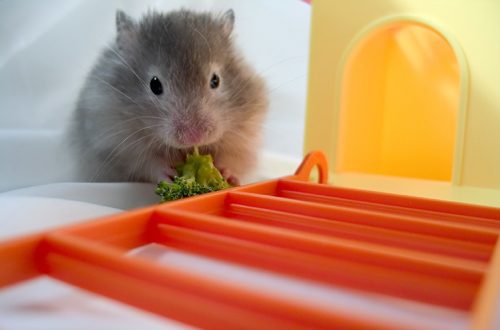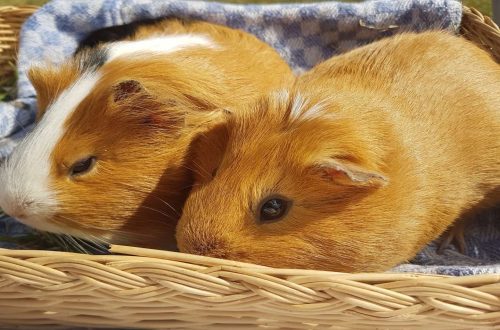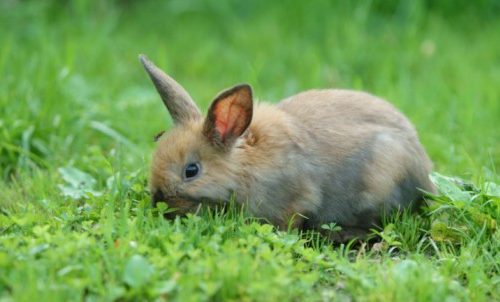
Angora hamster – fluffy shaggy representative of the Syrian breed (description, care and maintenance at home)

The Angora hamster is a long-haired hamster that you just want to take in your arms and never let go. There is a desire to immediately buy it and learn more about the breed. The Angora baby is the same Syrian, only with increased shaggyness.
Contents
Habitat and distinctive features
Its habitat in the wild is the mountainous terrain of the Caucasus, Central Asia. They like a temperate climate, dry and warm. Representatives of the breed choose areas with abundant vegetation for settlement.
There are cases when long-haired and short-haired hamsters of different colors are born in the same litter. Unusual shaggy babies with an uncharacteristic (not golden) color were dying in the wild. But at home, they found admirers and are able to live a long happy life.
Breeders tried to fix the mutational phenomena of Syrian hamsters, so the Angora hamster appeared with shaggy hair and rare colors: white, gray, cream, black, tortoiseshell. The Syrian Angora hamster male looks very impressive, his hair is 5 cm, the female is more modest, only 2 cm. They were first bred in 1972 in the USA. Fluffies look cute, so they are very popular with children of all ages.
Distinctive features of the subspecies:
- luxurious wool;
- absence of a tail;
- cheeks are rather large;
- the front legs are delicate, thin, miniature;
- body length of an adult hamster 10-12 cm, weight no more than 180 g.
Features of the breed

What is the name of a shaggy hamster? This is a Syrian hamster and it has its own characteristics:
- Syrian hamsters live in separate minks, but not far from their counterparts;
- like to sleep, especially in winter;
- the female bears offspring for 14 days, in the spring (during the period of activity) about 15 babies are born in one family.
Outwardly, fluffy hamsters look like guinea pigs, sometimes they are confused with these animals. In size, Angora hamsters are noticeably larger than Dzungaria.
Features of care
The long-haired Syrian hamster needs careful grooming, the coat needs to be combed, and tangled debris is pulled out. The main thing here is not to overdo it, bathing the baby in water is contraindicated – he can catch a cold. The baby will take care of the cleanliness of his “hair”. Install a sand bath in the cage – the pet will bathe and clean itself.
Cage and accessories
To make the baby comfortable, buy a cage measuring 50 × 30 centimeters. A good option is a dwelling with transverse bars. The cage must have a wheel with a diameter of at least 20 cm. This also applies to the house, it must be larger than for short-haired babies. Angora hamsters are very fond of all kinds of labyrinths, pipes, so you can buy a small multi-storey dwelling for them. It is good if the floors are connected by pipes, stairs or other loopholes.
Filler

The content of “shaggy” practically does not differ from short-haired counterparts, but they have long hair, which excludes shavings as bedding – it gets tangled in wool. For “shaggy” wood pellets are suitable as a filler.
Angora Hamster Grooming
The home environment that you lovingly create will please the Angorian. There is nothing difficult in caring for an animal, there is one “but” – this is long hair. Remember, she looks beautiful only if well-groomed, otherwise the baby will turn into a messy creature.
Wool is shaggy, it needs to be combed out, cleared of debris and tangled particles. You can use a toothbrush as a comb. It will not be superfluous to purchase a cleaning powder for long-haired hamsters. It is important to take care that the wool is less polluted.
Feeding angorets

The Angora hamster is unpretentious in feeding, the same diet is suitable for him as for other domesticated rodents, the main thing is to feed them on time with high-quality food. If the baby does not have enough vitamins and minerals, the “hair” may look ragged and unkempt. Therefore, in order for the fluffy Syrian hamster to look beautiful, do not save on feed.
Diet
Under natural conditions, hamsters use dry plants to build nests, and feed on succulent ones, so do not exclude greens from the diet. From fruits, they are happy to eat bananas, pears, apples. From vegetables – carrots, zucchini, eggplant. They also need protein foods. What to feed an Angora hamster besides purchased food and treats? So that he receives a full set of vitamins, once a week give him a boiled yolk, breast, low-fat cottage cheese or kefir.
You need to ensure that the shaggy hamster eats only fresh food.
Periodically check if the baby has dragged leftover food into the house – he can be poisoned by sour foods.
Favorite products:
- oats;
- corn;
- millet;
- flax seeds;
- green grass;
- dried fruits;
- nuts.
Prohibited products
Do not give treats that contain dyes, preservatives, harmful additives. Potatoes, citrus fruits, garlic and onions are strictly contraindicated for representatives of this breed, as well as:
- salty;
- sweet;
- exotic fruits, as well as watermelon;
- honey;
- almond;
- sorrel;
- canned food, smoked meats, pickled products.
If you give a baby a piece of watermelon or a salted nut, he will not die. But problems with the gastrointestinal tract can begin. And why take the risk? These animals live so little.
Length and lifestyle

The Angora hamster doesn’t need a roommate, so if you’ve got multiple furries, make sure everyone has their own cage. If several individuals live in one dwelling, be prepared for serious fights.
Remember: Angora hamsters are territorial animals!
Angora hamsters at home can live up to 3 years. There are cases when representatives of this breed lived longer, up to 3-4 years, but only with good care. There is a record holder in the world who lived for 7 years.
In order for the baby to live as long as possible, you need not only to take good care of it, but also to choose the right pet. Carefully examine his coat, it should grow evenly, even on the pads of the paws, be clean in the anus. The eyes should be radiant and the nose dry.
Deviations from the norms can lead to serious illness and death of the pet. Compared to djungarians, Angora hamsters rarely get sick, they have good immunity.
Important: the baby should visually please you.
How much does an angora hamster cost?
You can buy a baby from your hands in bird markets, in pet stores. A hamster with long hair costs an average of 200-300 rubles. If you search well, view ads, you may be given a pet, because hamsters are very prolific. The Angora hamster is inexpensive, but in order to provide him with the proper conditions, you will have to spend money.
Hamsters live an average of 1,5-4 years, during this time he needs to buy food, if desired – vitamins, accessories.
A cage is the first thing a pet buys, you’re not going to keep it in a jar, are you? The fluffy hamster is not a participant in the reality show Behind the Glass. The baby will be uncomfortable there. The jar is cramped, you can’t put a wheel and a cozy house for sleeping in it. The cage is well ventilated and easy to clean. The average price of an Angora cage is 600 rubles. If it is larger, then the price is correspondingly higher.
Character and training
Angora hamsters have a gentle nature, this is their main advantage. Fluffy hamsters are friendly towards people, get along with children. If you believe the reviews of the owners of cute creatures, they can go to the voice of the owner if he often communicates with the baby. To tame the Angora hamster, feel free to talk to him. After he is not afraid of you, carefully take on the handles.
If you buy a baby at the age of 1,5-2 months and immediately start training, he will very quickly get used to the tray, as well as master other skills.
The Angora hamster is a very gentle and vulnerable creature, so try not to scream in his presence, but to behave calmly. Despite this, Angora rodents are very brave, so from the first meetings they are not afraid of a person. They are funny: to cheer yourself up, watch the behavior of the baby during his activity.
To sum up
Features of keeping a shaggy hamster of the Syrian breed:
- It is not picky about the conditions of detention and is practically silent, with the exception of night time. So that the hamster does not disturb your sleep, you can take it out into the hallway or another room at night.
- Consumes little food.
- Calmly refers to the manifestations of affection from the owner.
- Angora hamsters breed without problems in captivity.
Possible Content Difficulties:
- An Angora hamster bites if your hands smell like something tasty or you startle it.
- The kid is prone to obesity, so take care of the simulators, the minimum set is a running wheel.
- In order for the care to be of the highest quality, place the following attributes in the cage: a drinking bowl, a sand bath, a chalk stone.
- When the temperature drops to +10 degrees, the Angora hamster can hibernate.
- Since this is a rodent, it can gnaw on everything that gets in its way, so only allow walking under your supervision or in a fenced area.
- An uncleaned cage can become a source of an unpleasant odor.
Now you know that the Angora hamster is a type of Syrian breed. In order for your fluffy to live a long and happy life, do not overfeed him, select a balanced diet, clean the cage, and do not settle roommates with him.
If you are frightened by the stories that hamsters are aggressive, they can grab your finger, you should know that this does not apply to cute Angoras. The hamster will quickly get used to you and become a true friend.
Angora hamster is a fluffy representative of the Syrian breed
4.7 (93.08%) 26 votes





